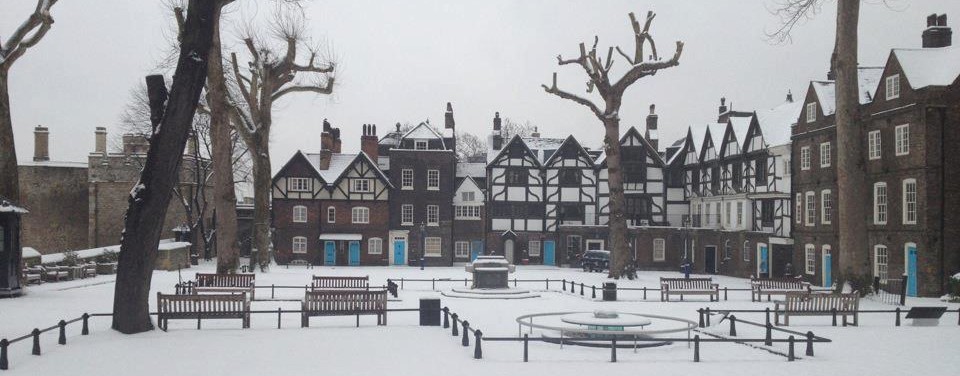Yeoman Warder and The Bodyguard of the Yeoman of the Guard carry partisans whilst wearing State Dress.
There is very little information on these weapons, although this passage taken from Claude Blair’s book
‘European and American Arms’ – Barsford 1962.
“Partisan – a spear with a long triangular two edged blade, having two small upturned pointed lugs
at its base. The partisan seems to have been developed in Italy from a type of spear with a simple
triangular head shown on Italian paintings as early as the beginning of the 14th century.
The earliest form of the partisan which had a triangular blade without lugs, seems to have been
introduced in the second quarter of the 15th century. Known in England as a langdebeve (French
langue de boeuf) it survived until the 17th century, though the true partisan had already appeared
in the third quarter of the fifteenth century.
It was immediately adopted in other European countries and by the beginning of the 16th century had spread all over Europe. Despite its
obvious qualities as a fighting weapon it speedily became the most popular of all parade staff weapons
and as such remained in constant use until the 19th century; even today the English Yeoman ofthe Guard and Yeoman Warders carry partisans on ceremonial occasions. During the whole of the period the basic form of the weapon has remained unchanged, though on many of
the later examples the lugs, which were originally designed for parrying, were cut into fantastic shapes.
In the English army of the 17th century lieutenants carried partisans as leading staves.”
There is a passage from ‘The Yeoman of the Guard’ by Preston in 1885 which says that the coronation of king George III resulted in a letter to the Master of the Great Wardrobe authorising him to purchase forty basket hilted swords with brass hilts and silver handle, double gilt and forty partisans chased and gilt with cowls of crimson, Skye blue colour and white silk were to be purchased along with other items of our uniform.

Leave a reply to Partisan